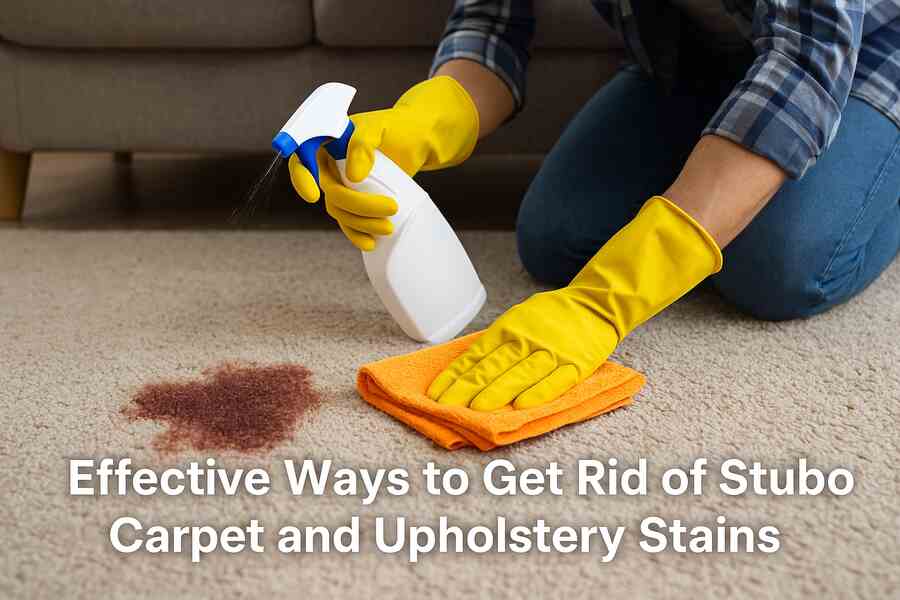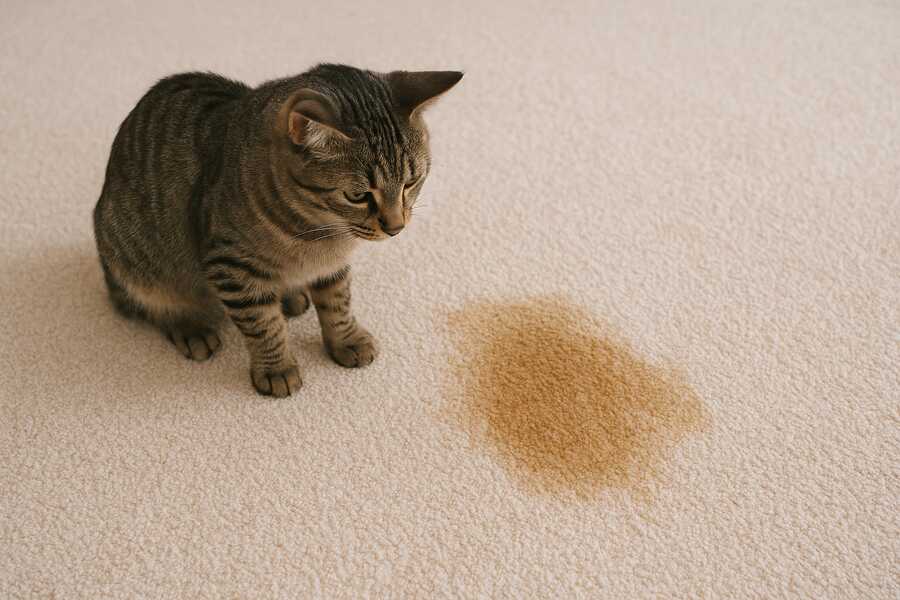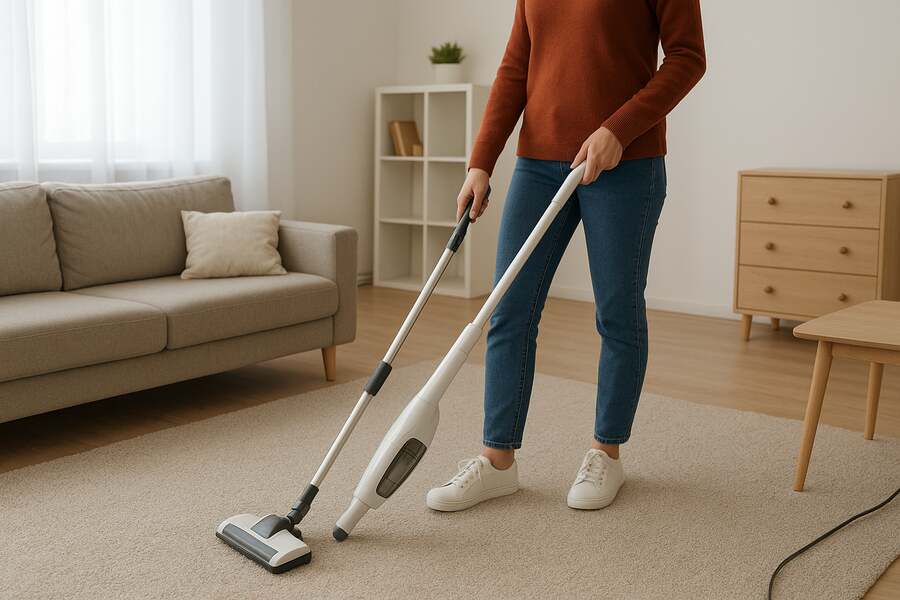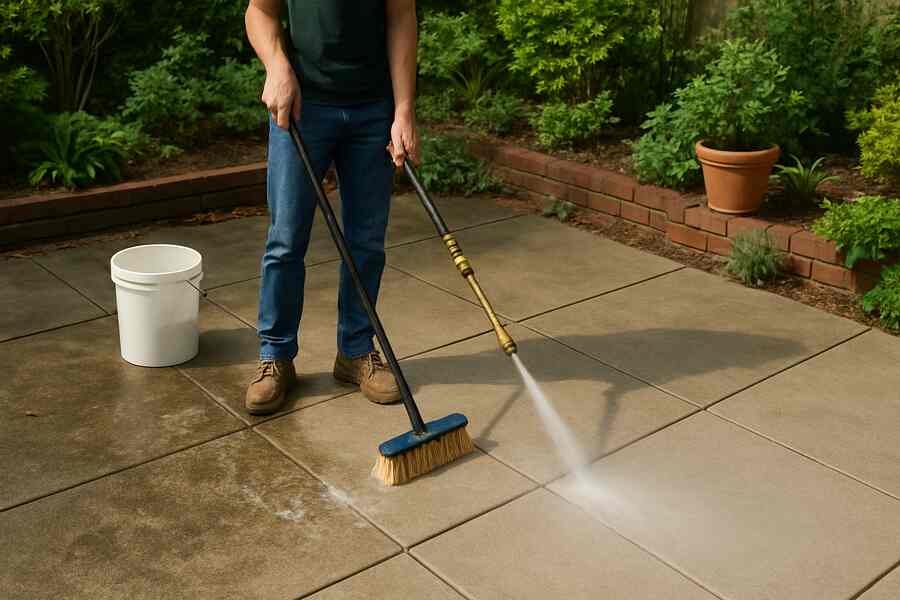Effective Ways to Get Rid of Stubborn Carpet and Upholstery Stains

Stubborn Carpet and Upholstery Stains: Easy Removal Tips
Have you ever sat on a stain of coffee or have you spilt some sauce on your sofa and cried immediately? You are not standing solitary. Tough soils take on that aggravating habit of presenting themselves on our carpets and furniture at the most inappropriate moment. It can be sticky fingerprints, muddy footprints, pet accidents, red wine or other spots; these ones are difficult to ignore and even harder to get the stain out or even the dried ink smears.
However, no need to panic, you will not have to live a nightmare, cleaning them. You can get rid of those stubborn stains with a proper mindset, some simple household stuff and some patience and make your fabric coverings seem new once more. Here in this guide, we will tell you how to get rid of the most common tough stains within a very short time, very easily.
1. Before You Start, Know Your Fabric
Before you touch a bottle of some cleaning solution, you have to realise the fabric you are dealing with, according to Bond Cleaning Mermaid Beach. Carpets and upholstery are available with a number of materials, which all have differing cleaning needs. A good rule is to always read the manufacturer’s label or label of care. The most common include codes W (water-based cleaners are safe to use, S (only solvent-based cleaners are safe to use), WS (use either cleaners), and X (use a vacuum cleaner only). Stains may be aggravated by using the wrong cleaner, or the choice of fabric may be ruined. When it comes to applying something on a visible section of any part of your body, always do a spot test first in an inconspicuous spot.
2. Quick Action: New Stains Are Less Difficult to Clean!
Speed is everything as far as stains are concerned. The quicker you act, the more there are chances of getting rid of the stain. The initial step is to blot the stain as it is, with a pure and dry cloth, the moment spillage occurs, never rub but only blot. Use a cloth to work inwards, using the outside edges of the stain to the centre. In case of protein stains such as milk or blood, avoid hot water, which may make the stain permanent. Taking action will ensure that the substance does not form any bond with the material.
3. DIY Cleaning Products
There is no need to pile up your store with commercially available cleaners, which cost you a lot when cheap, available household stuff can do almost as good. To illustrate a good example, baking soda and white vinegar are a formidable combination: simply add baking soda to any stain, saturate it with a vinegar and water mixture, leave it to foam and pour and vacuum. Greasy stains and food stains can be treated using dish soap and a warm water solution. On the more difficult stains, such as red wine/juice, hydrogen peroxide (3%) can work, just be careful as it may bleach some fabrics. Blot the application of any solution on the area entirely after rinsing with clean water.
4. Fighting with Common Carpet Stains
Every type of stain needs a different method. In the case of spillage of coffee or tea, we would want to blot on the liquid spillage first and proceed with a solution of white vinegar and dish soap and water on the spot of the spillage by dabbing on it. Repeat the procedure until you can rinse it. In the case of pet accidents, enzyme cleaners are best used to wash away not only stains but also odour, whereas a dusting of baking soda to neutralise a bad smell can be implemented. Cold club soda applied to cold wetting blots red wine stains well without the need to further treat the area with a vinegar-soap solution. In the case of mud and dirt, it is to be left to completely dry, loose particles to be vacuumed up and colored stain treated with warm soapy water.
5. Stain Cleaning Upholstery
Upholstery furniture is quite vulnerable in comparison with carpets, and soft cleaning techniques are essential. Apply and work in your cleaning solution with either a soft-bristled brush or a microfiber cloth. In the case of grease, sprinkle some cornstarch or baking soda, scrub the dried grease and vacuum the cornstarch/baking soda and then scrub with some dish soap. Ink may be treated by generously applying rubbing alcohol on a cotton ball to remove ink stains. Blood, cold water and gentle soap are most effective, although hydrogen peroxide can be applied more carefully on dry blood (first test fabric colourfast).
6. Do Not Overwet the Material
Excess use of liquid is among the most common cleaning errors that leave traces in the form of water rings on the floor or even destroy the padding under the cover. Rather, wet the stained region minimally as opposed to soaking it. After the cleaning process is over, wipe the moisture using a clean and dry cloth and dry the fabric with air. One can use a fan on and leave windows open to quicken the drying process and prevent a musty smell and the development of mould.
7. Cleaning And Vacuum
After your carpet or upholstery has thoroughly dried off, it is important that you vacuum the area so as to get the air out of the fabric, finally bringing back texture. This also clears all the residues left after cleaning agents such as baking soda or dried detergent. Cleaning up the vacuuming conditions serves to provide the treated area with a fresh appearance and avoid the attachment of loose dirt to slightly moist fibres.
8. Apply Guarding Covers and Sprays
Once you have done all your hard work, it is prudent to take some preventive measures. The last thing is the upholstery protector sprays, which will protect the fabric by forming a layer that repels liquid and against future stains. When you have children or pets at home, you can find washable slipcovers, area rugs in heavy traffic areas. With such protection, the subsequent cleaning needs are faster and achievable, besides extending the life of your furniture or carpet.
Conclusion
Stains are an unavoidable thing, yet the lasting injury is not inevitable. You can tackle most stains on your carpet and furniture at home with quick response, basic domestic equipment and correct methodology. The second time life stains your cloth fabrics, just sit back and start eliminating it bit by bit- because you are now armed with the information on how to solve the problem.



